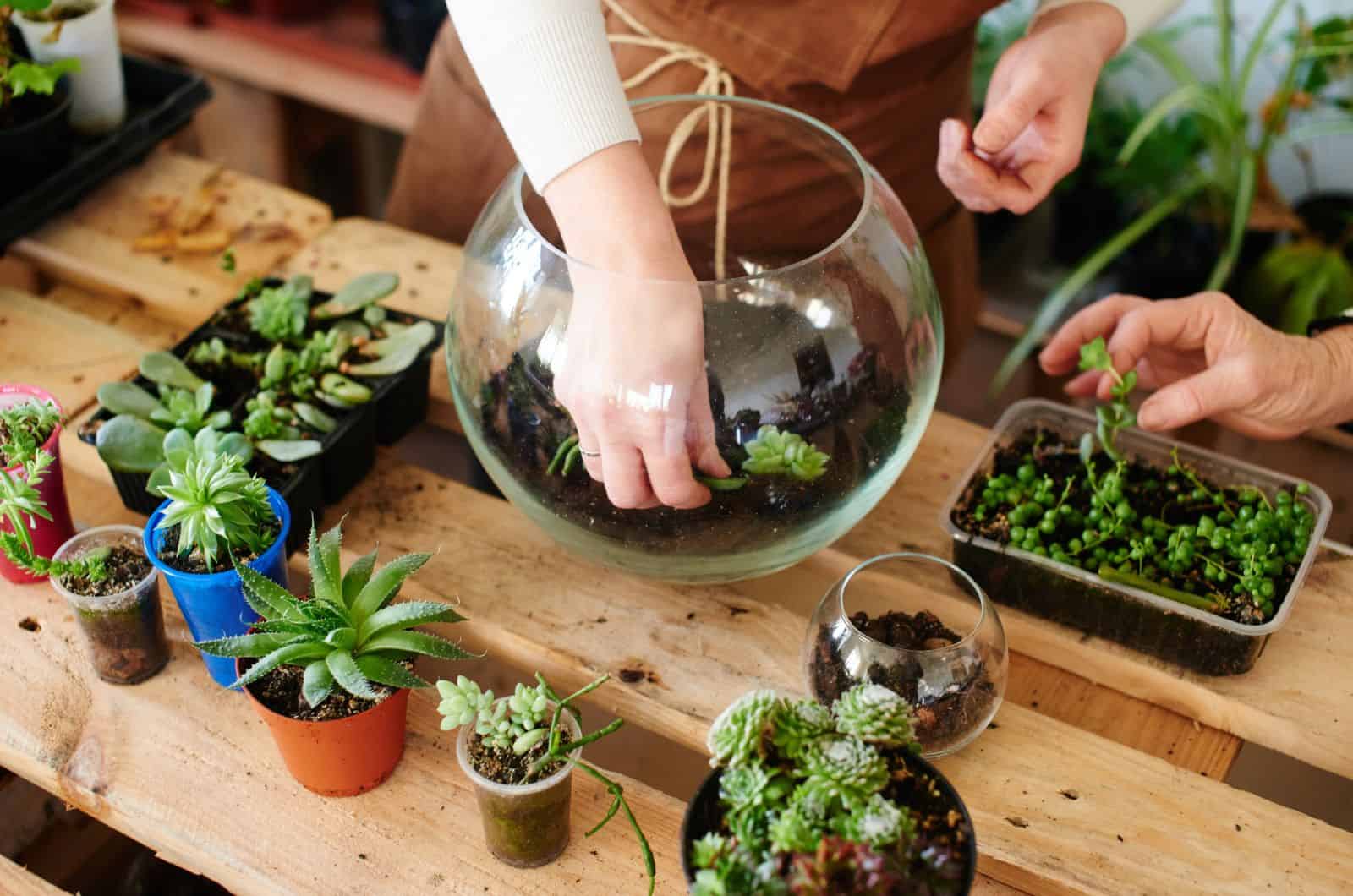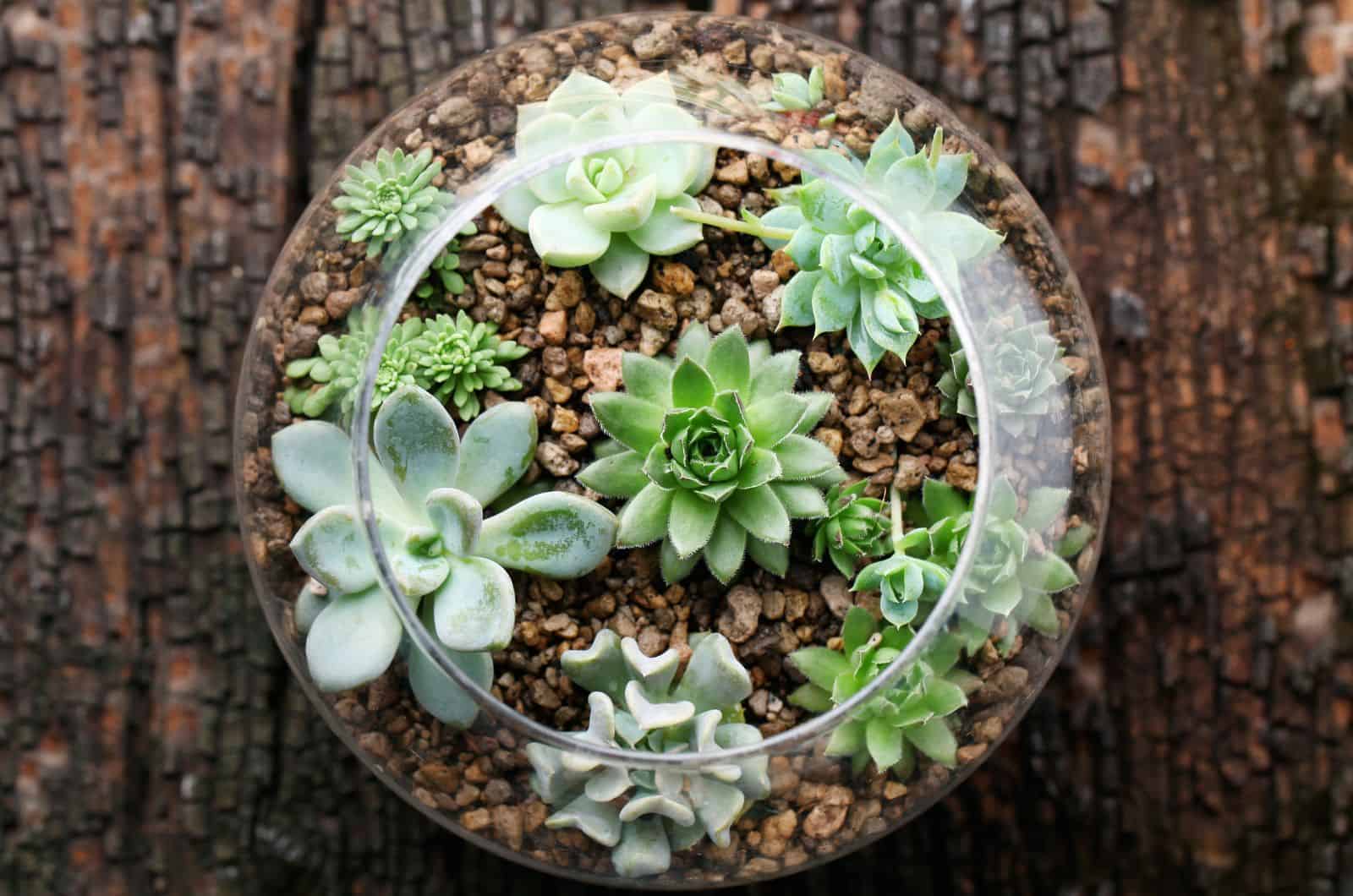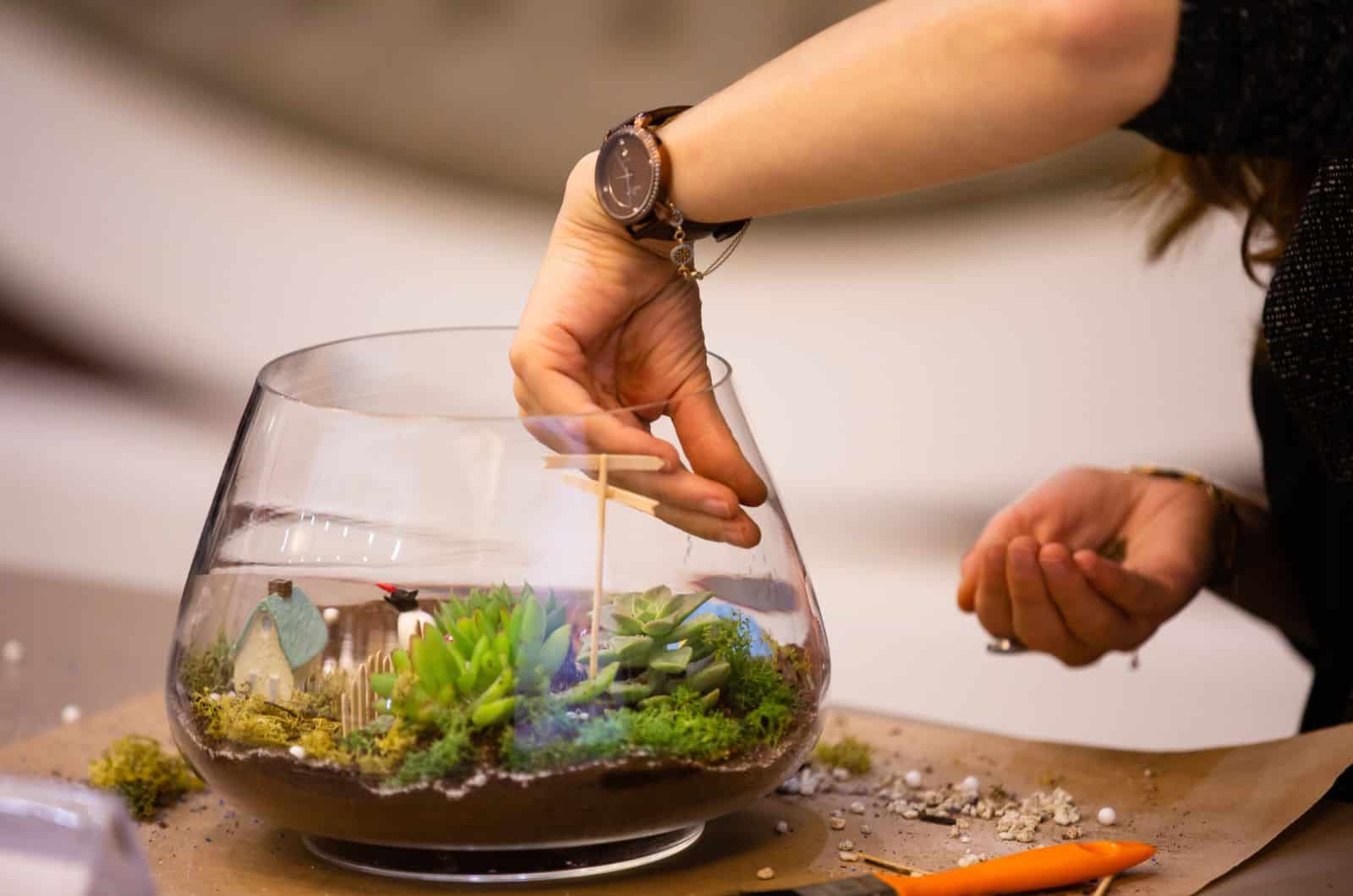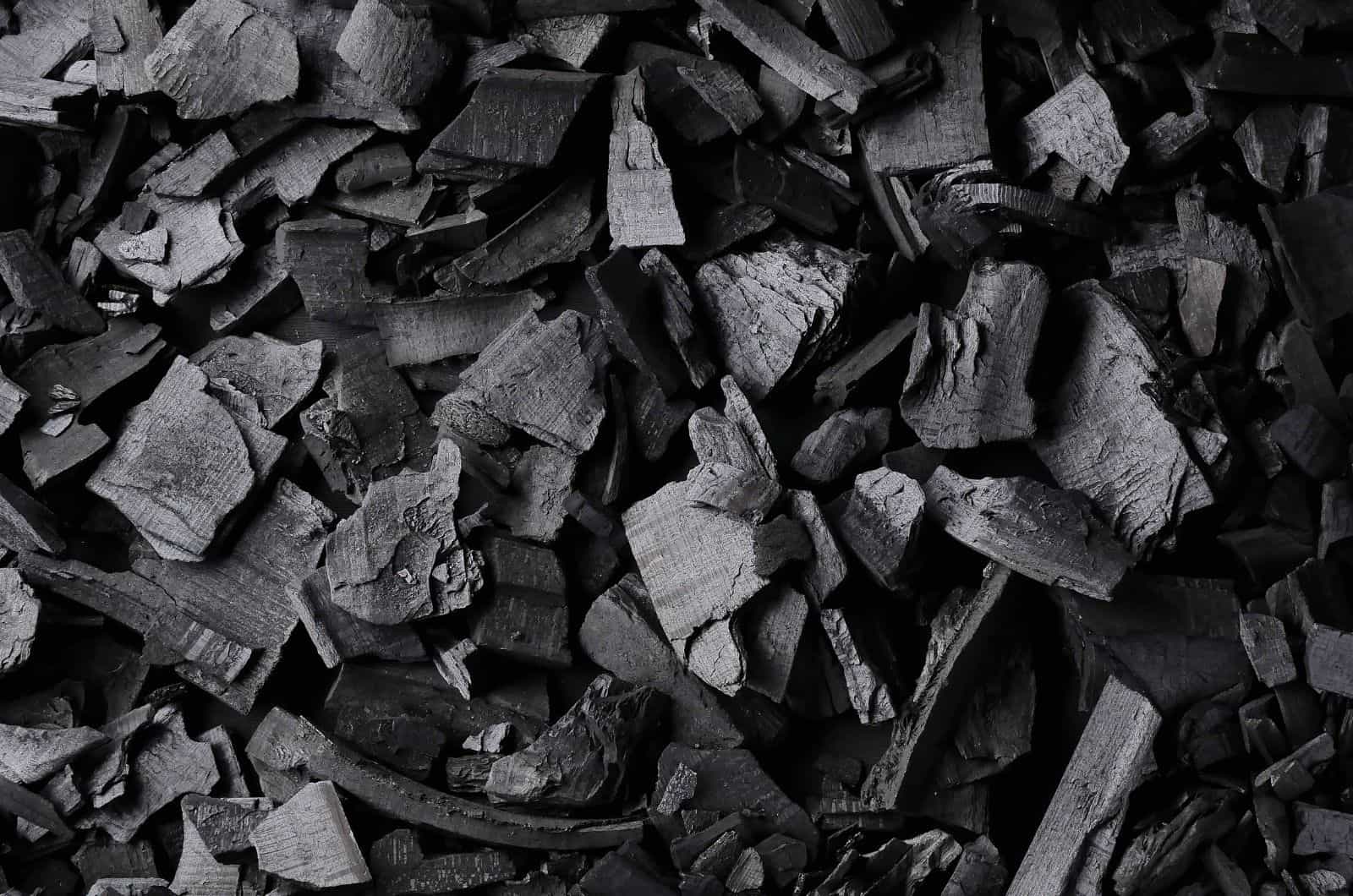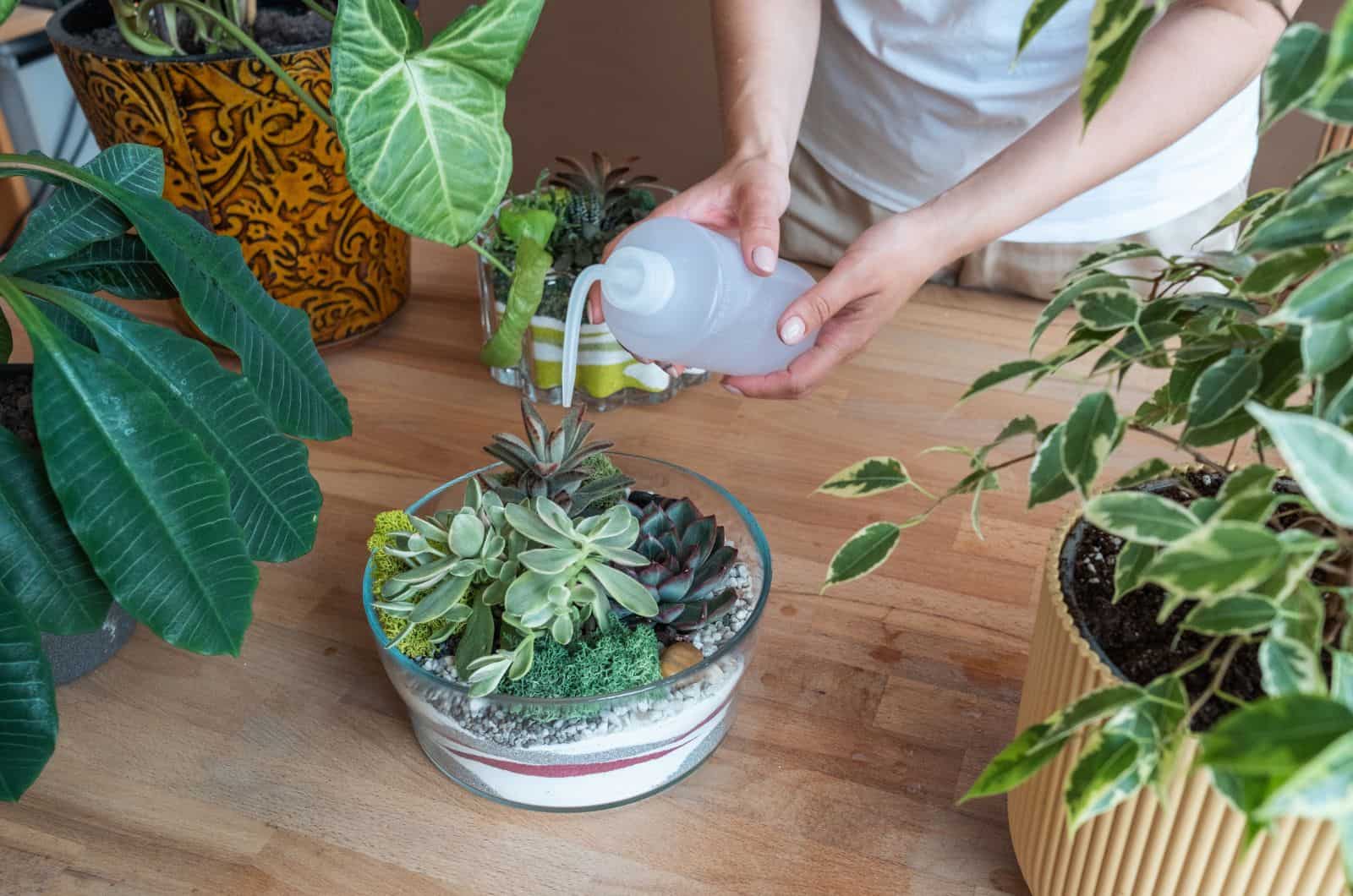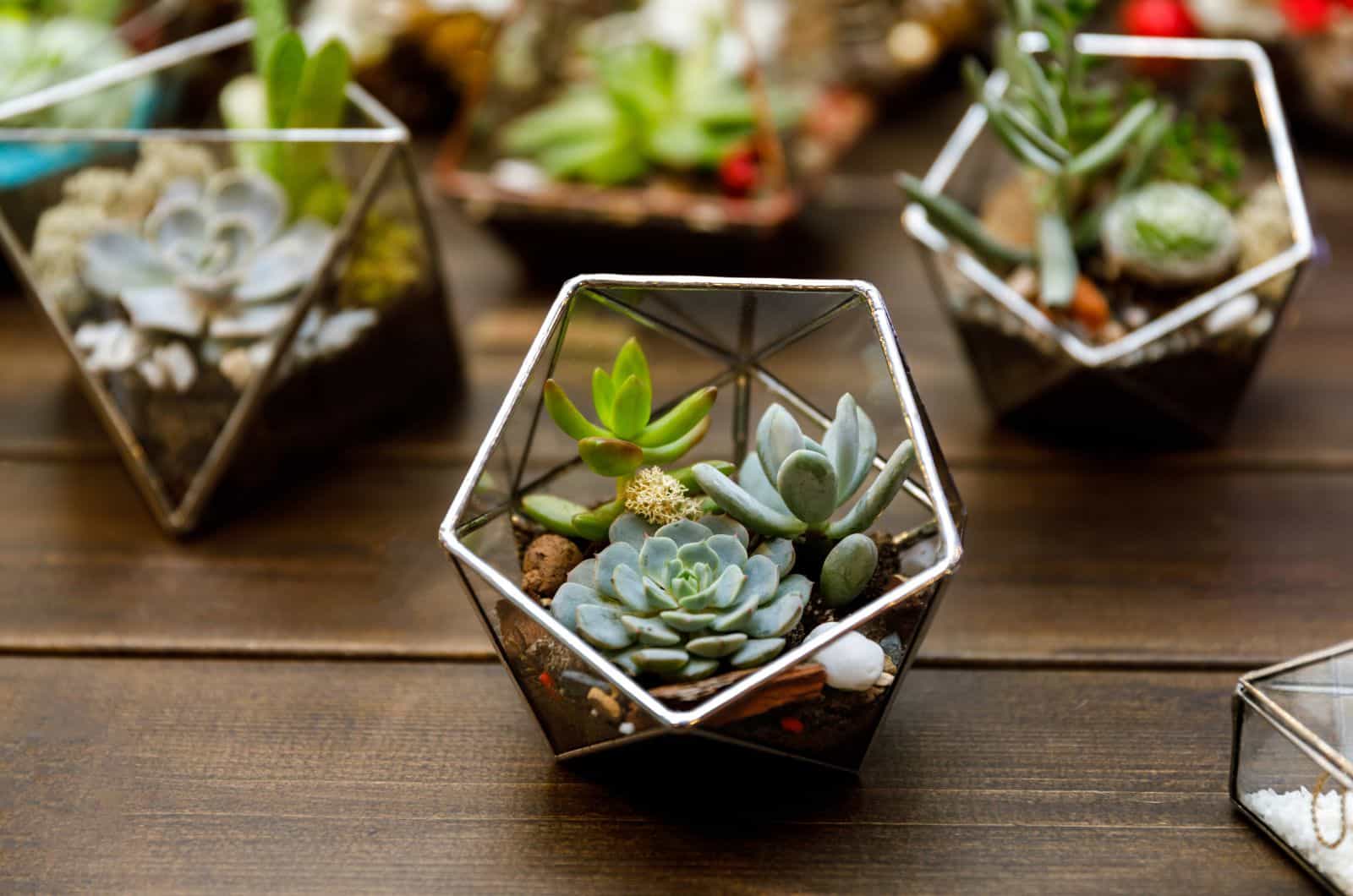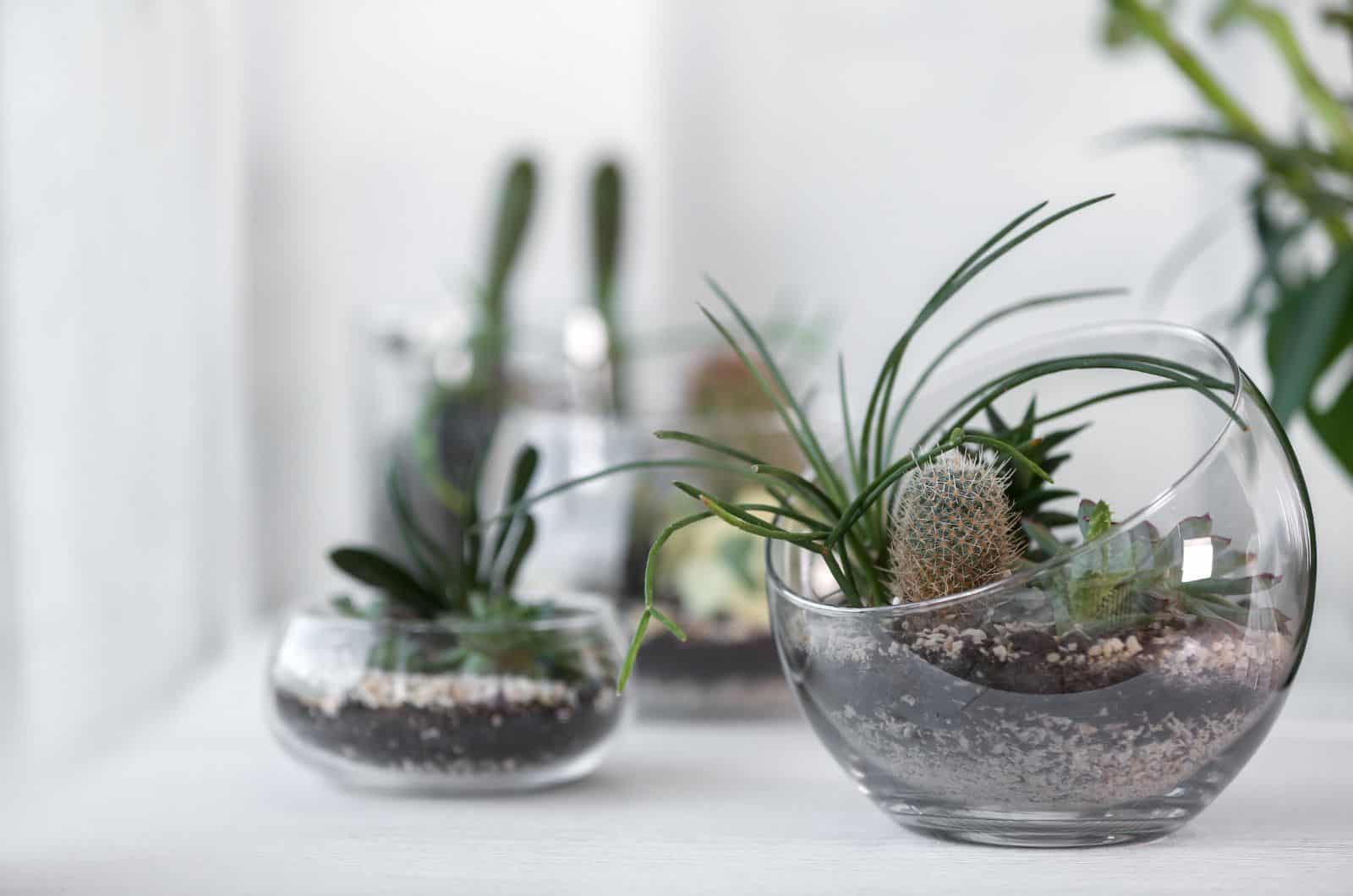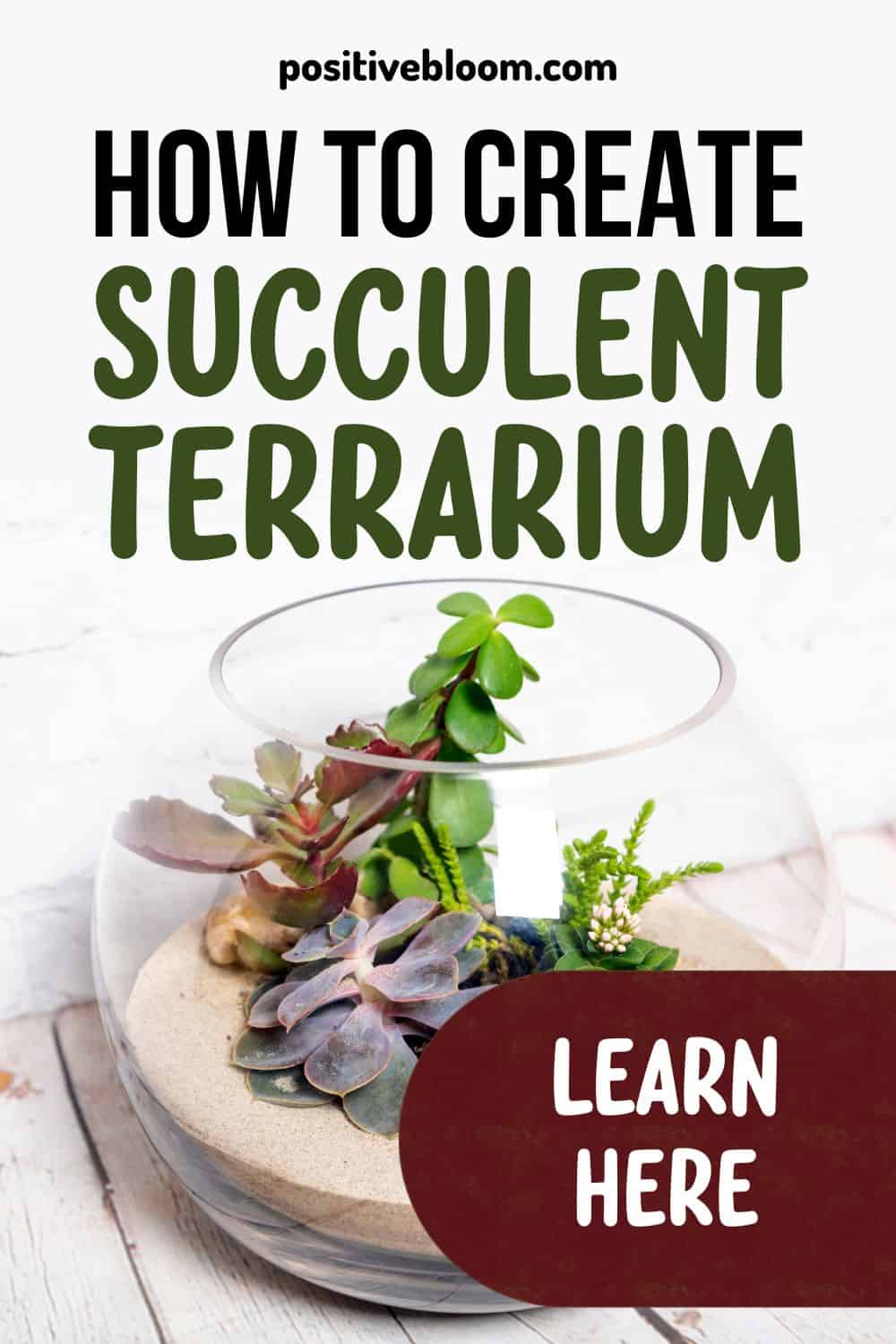A great way that you can use plants to decorate space is by creating a terrarium. Plant terrariums are small, indoor gardens that look absolutely adorable, especially ones that are filled with lots of different plants and figurines!
Not only will a terrarium make your space more lovely, but it’s also really fun to create a DIY terrarium. You really get the opportunity to express your creativity and create a fine centerpiece!
Succulent plants are a great option for a glass terrarium, mainly due to their small size and unique leaves. However, these plants don’t thrive in wet environments, so you will have to make a few adjustments when making DIY succulent terrariums for succulents.
Don’t worry, it’s still easy and fun!
Keep reading to learn how to create your own succulent terrarium!
What Are Succulent Terrariums?
Fairy gardens and terrariums are gardening DIY projects that people have been enjoying for centuries. They are miniature gardens that can be placed anywhere in your home, and you will only need a glass container, some plants, and soil to make one!
Succulent terrariums are terrariums that mostly consist of succulents. These plants love arid and desert conditions (especially small cacti plants), so you can create a beach-themed terrarium or maybe a terrarium inspired by Western movies, which are filled with cacti!
Please note that these plants can only grow in open terrarium containers — even though some succulent types are tropical and love humidity, most of the small types are desert plants that don’t thrive in wet environments. Therefore, an open glass bowl or mason jar that allows normal airflow is the best option!
How To Choose Succulents For Terrariums
Luckily, there are lots of beautiful succulents suited for terrariums, and I’m sure that everyone can find one that fits their style and home decor.
So, how can you choose the right ones when there are literally thousands of different options out there?
You have to focus on the plant’s size first. Choose smaller varieties that can fit in the terrarium perfectly (you don’t want tall succulents outgrowing the terrarium!).
I would recommend you get as many different succulents as possible that vary in size, color, and shape. This way, you can create dynamic succulent arrangements or even go for a monochromatic one where all the succulents are the same color.
You will also have to take into consideration plant care when choosing succulents for terrariums. Even though they are the same plant species, different types of succulents can have different requirements. You can only create one type of environment in a terrarium, which is why it is important to choose plants that have similar requirements.
Otherwise, your succulent garden might be dead in a matter of weeks even though you carefully followed the instructions when making the terrarium.
Some of the succulents that can be used for terrariums include:
• Jade plant
• Dwarf aloe
• Mammillaria cacti
• Aeonium
• Hen and chicks
Creating A Terrarium: Step-by-step Instructions
Making your own succulent terrarium isn’t a difficult or expensive task. When you’re putting together a succulent terrarium kit, you will need a specific terrarium succulent planter. It has to be an open terrarium so that the greenery can breathe easily.
You will also need a specific potting mix because these plants are prone to overwatering, and the drainage in terrariums is generally poor.
You will need specific plants that can adapt to living happily in terrariums, and you can add different figurines, rocks, and other decorative elements that you like.
Let’s dive right in!
Step 1: Choose The Best Terrarium Container
There are plenty of options when it comes to choosing terrarium containers — you can spend money on a pricey and elegant one, or you can simply use an old mason jar to grow your mini garden!
You just have to make sure that the humidity is low and the airflow is optimal.
When it comes to the shape, I usually go with round ones, however, you could pick a rectangular aquarium, just make sure you clean it thoroughly!
Some great options include:
• A glass bowl
• A glass jar
• A soup bowl
• An aquarium
• A mason jar
• A large wine glass
• A trifle bowl
• A wardian case (with windows that open)
• A compote bowl
• A large fruit bowl
Truth be told, the type of glass container you choose will not affect the terrarium. You can pick and choose any type of container that suits your home decor, just make sure that it has an opening because terrariums don’t usually come with drainage holes, which are crucial for removing excess water.
Step 2: Make Sure To Add A Drainage Layer
At this stage, you will need to ensure proper drainage for your terrarium plants. Succulents don’t like to be in soggy soil, but completely dry and compact soil doesn’t suit them either.
While most houseplants, like Monstera adansonii varieties, prefer moist soil, and should be watered every other day, it’s not the same with our succulents. You should let the soil dry out before watering them again, otherwise you can easily overwater and completely ruin the plants.
This is why we make a drainage layer first, also known as a false bottom. It will help to remove excess water, and also assists with the structure of the terrarium. By adding a drainage layer to the bottom, overwatering and root rot (common fungal disease that can kill the plant) can be prevented.
There are different options when it comes to material for the drainage layer, so you can pick and choose whatever suits your design best. Some of the options include:
• Rocks — you can use pebbles, river rocks, gravel, lava rocks, and other colorful, tiny rocks
• Sand — you can either choose a regular sand with proper drainage, or use decorative ones that come in various colors
• Bark chips — if you want to a create jungle or wood theme in your terrarium, bark chips can be used as a bottom layer
All you have to do is lay the gravel, sand, or bark chips on the bottom of the succulent terrarium. One or two inches should be enough, though it depends on the size of the terrarium.
Step 3: Use A Filter For Separation
Though this step is optional, I always prefer to add a filter for separating the material. Put a small filter over the drainage layer just before you add the charcoal layer — this will prevent different materials from mixing together and ruining your terrarium’s design.
Finding a filter shouldn’t be that hard, just make sure that it’s thin enough for the water to easily pass through. You can use either a coffee filter, gauze, construction paper, or a cheesecloth.
Don’t worry, it won’t be visible, especially once you add other materials on top of it.
Step 4: Add Charcoal Or Perlite
The next step is adding charcoal or perlite. Charcoal will likely give better results, though perlite is a great alternative that can also do a fine job.
Charcoal will help with purification, and it is also useful for preventing fungal growth and root rot. Another issue that charcoal fixes is a bad smell in the terrarium, though the bad smell usually comes from fungi.
Keep your terrarium fresh by adding charcoal before the potting soil!
Step 5: Add The Soil
This step is probably the most important one, so pay close attention!
You can’t use a regular terrarium blend or a regular potting mix for houseplants. You can either buy a cactus soil, use potting soil for palm trees, or a succulent potting mixture.
However, the best solution is to create your own soil mixture that is well-draining and rich in nutrients!
The best soil for succulent terrariums consists of pumice, horticultural sand, activated charcoal, coco coir, and trace amounts of worm castings. If you want to learn more about this topic, check out this article on the best aroid soil mix.
Step 6: Add Hardscape Elements
When we say hardscape elements, we are referring to decorative structural elements that are often added to terrariums for artistic purposes. If these are quite large in size, they should be added before you add any plants.
There are different designs, shapes, and sizes that you can use, for example, textured rock or gnarling hardwood. Lot’s of options are available on Amazon, and you might also find some at your local market.
Step 7: It’s Time For The Succulent Plants
Now it’s time to tie your whole terrarium together!
However, you can’t just simply throw your plants in there and hope for the best. You have to first prepare the plants.
Please check our section about what plants you can use for terrariums to find out more.
Preparing The Plants
• Remove any old soil from the plant’s roots because it might be contaminated with fungi or bacteria. Clean roots are also easier for planting.
• Separate the plant into smaller parts if you are dealing with larger succulents that can be divided to numerous smaller ones, which are quite easy to manage and arrange.
• If you are using a plant that is too large, you can prune it a bit. This also applies to the roots if they are too long, especially because the soil in a terrarium is not deep enough to support long roots.
Planting
• Use a spray bottle filled with water to soften up the soil and make the entire planting process more manageable.
• The next step is to make a hole in the soil big enough to fit the plant’s root ball. You can either use a spoon or a miniature spade.
• If you have one plant that is large, put it at the center of the terrarium where the soil is the deepest.
• Continue adding plants around the central one, making sure that every plant’s root ball is completely covered with soil.
Step 8: Decorating
This is definitely the funnest step when creating a terrarium. There are so many options that you can choose from to fill out your terrarium — for instance, if you want a beach-theme, you can add some seashells around the plants.
You can choose from various figurines, preserved moss, colorful rocks, fake plants, and air plants!
Air plants look absolutely amazing next to succulents, especially because they grow long, thin tendrils that are the complete opposite of the thick succulent leaves. These types of plants don’t need to be planted as they usually grow on other plants and trees.
I often use Tillandsia, though there are numerous air plants that can be added to terrariums. Air plants don’t have any special requirements except for the light conditions, so make sure that you keep your terrarium in bright light.
How To Take Care Of A Succulent Terrarium
Taking care of a succulent terrarium is similar to taking care of succulent plants, which shouldn’t be kept on a windowsill that gets direct sunlight throughout the day.
The same thing applies to the terrarium. Make sure that you keep it in an area that gets bright indirect sunlight. Direct sunlight can harm your plant and burn its leaves.
Make sure that you water them once the soil has completely dried out. Using tap water is perfectly fine, though you can collect some rainwater or use filtered water instead.
You can water your terrarium once a week during the summer, and once every two weeks in the winter.
When it comes to fertilization, if you use the right soil mixture then all necessary nutrients should already be present.
Soon enough, the plants will adapt to their new environment, and your terrarium will be thriving! Make sure that you post it on social media, and you can use some of these awesome succulent quotes as a caption!
Drawbacks Of Growing A Succulent Terrarium
Although they are low-maintenance and look quite mesmerizing, there are some downsides of growing a succulent terrarium.
The first drawback is drainage.
As we already discussed, succulent plants don’t enjoy being in wet soil, and they need drainage holes to remove excess water from the soil. However, terrariums don’t have drainage.
There are some methods that you can use to improve drainage, such as adding gravel to the bottom, but in most cases the water will evaporate back into the soil, which makes it completely moist.
This is where the charcoal jumps in, because it prevents harmful fungi and bacteria from growing.
Other issues are associated with humidity and temperature.
Terrariums are like small greenhouses, and they get extremely hot and humid. However, this issue can be avoided by growing succulents in an open terrarium. Even though the terrarium is open, it still creates a humid environment that could potentially harm your succulents.
It’s important to pick succulent types that enjoy indirect sunlight because most succulents love direct sunlight — and keeping your terrarium in direct sunlight is a big no-no because it can get extremely hot and damage your plants.
Another possible issue is the size and growth rate of succulent plants. Most succulents need space to grow, and they can grow very tall!
This is why it is important that you use small succulent varieties that are capable of growing normally in small terrariums. However, these plants grow relatively fast and some types might double in size in just a year, so you might need to create a new terrarium all over again.
And lastly, growing numerous succulents in a crowded area will lead to competition for nutrients and water, which means that the succulents in the terrarium probably won’t get the same treatment.
However, most succulent plants are very tolerant to various conditions, especially drought — just imagine that cacti plants grow in the desert without water for weeks in their natural habitat!
If these drawbacks discourage you from creating a terrarium, you can find some great alternatives, such as creating a fairy garden or a jarrarium (which is basically an aquatic terrarium).
Frequently Asked Questions
1. Should succulents be in an open or closed terrarium?
Succulents are a type of aroid plant that loves being in dry environments, though there are some types that thrive in high humidity. However, most of the succulents suitable for living in terrariums can’t stand high humidity levels.
A closed terrarium is like a greenhouse; it gets hot and humid. This is why the best option for a succulent terrarium would be an open glass container that allows optimal airflow and water evaporation.
2. What is the most important thing to do when planting a succulent terrarium?
The most important thing is that you use an open glass container that won’t get too humid, and provide the plants with proper drainage. This can be done by applying a drainage layer at the bottom of the terrarium, which usually consists of gravel, pebbles, sand, river rocks, etc.
To prevent fungi and bacteria, as well as to avoid overwatering, you should add a layer of charcoal on top of the drainage layer.
Lastly, you should use a potting soil that is well-draining and won’t retain moisture. This is important because succulents can easily get overwatered, and they hate being in soggy soil!
3. What can be used as a substrate for a succulent terrarium?
You have to make sure that the substrate is well-draining and suitable for the optimal growth of succulents. You can either buy a cactus or succulent potting mix, and use it as a substrate. You can also try and make one on your own.
All you need is some perlite, coco coir, sand, pumice, and worm castings.
4. What type of succulents should be used in a terrarium?
You should definitely avoid planting tall succulent varieties in a terrarium because they won’t have enough space or nutrients to grow. You should only focus on small succulents and cacti plants that only grow to a few inches tall.
Plants that can be used in a terrarium include the jade plant, echeveria flower, zebra plant, snow white waffle plant, hen and chicks, and mother of thousands varieties.
To Sum Up
Creating a succulent terrarium is a fun activity for the entire family, though I also prefer making a terrarium on my own and arranging the plants however I want. Nonetheless, it is definitely an easy and fun task to do, especially because you get to use small figurines to decorate!
All you have to do is make sure that you use an open terrarium because these plants don’t thrive in humid environments. You must also provide them with proper drainage because they don’t like being in wet soil either.
But don’t worry, once you finish making a terrarium, you won’t have to take care of it too much; just water them once the soil is completely dry, which usually takes a couple of weeks.
A terrarium can truly contribute to your home decor and make any room look more lively, especially if you are into the minimalist style. Terrariums create a great pop of color and blend perfectly with the whiteness of the room!
I hope you enjoy making your own terrarium, and best of luck!
Until next time!
Like this post? Share or pin it for later!

